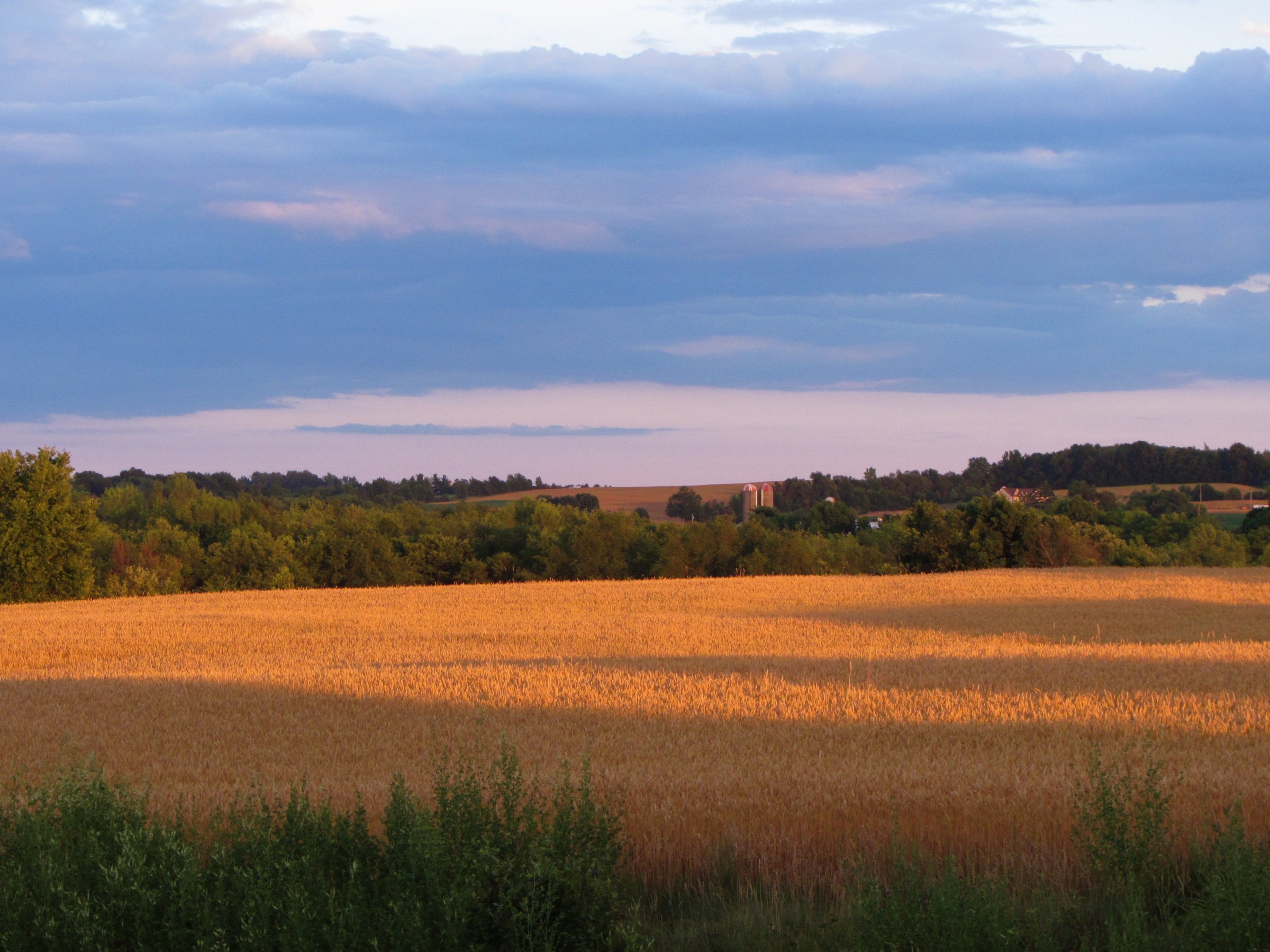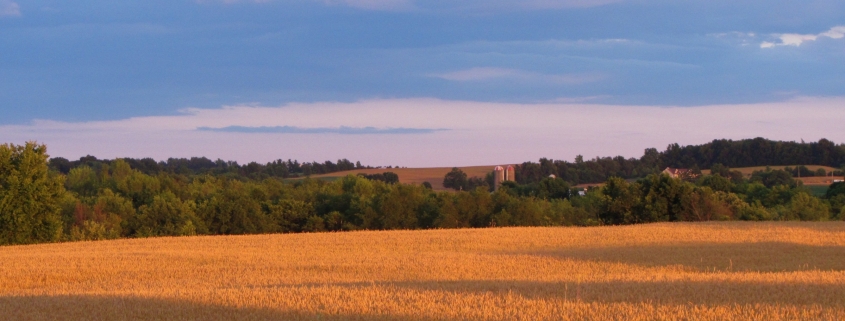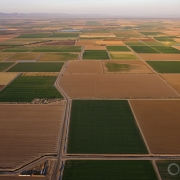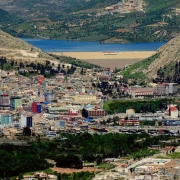‘The Need Is Significant’: Fast-Growing Michigan County Confronts Groundwater Challenges
Ottawa County attempts to balance population growth and groundwater sustainability.

A field in Ottawa County, Michigan. Salty groundwater has damaged some crops in the county. Photo courtesy of Flickr/Creative Commons user Rachel Kramer
By Brett Walton, Circle of Blue
Paul Sachs has a lot of explaining to do.
As the director of the Ottawa County Planning and Performance Improvement Department, Sachs’s job is to inform residents, elected officials, and business leaders that, even though they sit next to one of the largest bodies of fresh water on the planet, the fast-growing Michigan county has a groundwater problem more reminiscent of the deserts of the American West than the Great Lakes region.
We hope to direct new growth to more sustainable areas.” — Paul Sachs, Ottawa County
“When you first introduce the idea that Ottawa County is running out of groundwater, people have a hard time connecting the dots,” Sachs told Circle of Blue.
Following years of intensive research conducted in partnership with Michigan State University, Sachs and others in Ottawa County now have made those connections and gained a solid understanding of their dual challenge. The county’s deep aquifer is being depleted at the same time that salt concentrations in groundwater are rising. It’s a one-two punch that threatens the county’s residential growth and its diverse farm economy.
Armed with that knowledge, Sachs has become a groundwater evangelist of sorts, aiming to guide Ottawa County’s development toward a more sustainable path. The county is attempting to maintain a delicate balance: protect its groundwater supply while respecting local decision-making authority and not choking the economic engine that has propelled the county to the highest population growth in the state.
With those goals in mind, Sachs is coordinating the formation of the state’s first county groundwater commission. The commission’s by-laws have yet to be written and its membership is not finalized, he said. But the idea is to bring together qualified individuals to oversee the county’s groundwater sustainability efforts. Those efforts are outlined in a document that includes 27 strategies, from educating local leaders and the public about water-saving practices to evaluating groundwater-protection policies that can accommodate anticipated population growth.
“We hope to direct new growth to more sustainable areas,” Sachs said, explaining the change in thinking. “Previously, without understanding our groundwater, growth occurred wherever developers wanted.”
Limiting the Number of Straws in the Ground
The balancing act between groundwater use and growth is playing out in state legislatures and county councils across the United States. Often unregulated, groundwater is being exploited in many rural areas, either for farming or for residential developments.
In Nevada, state officials ordered a moratorium last December on new residential wells in a community north of Reno, because of concerns that too much water was being pumped from the aquifer.
California passed a law in 2015 requiring overdrawn groundwater basins to end unsustainable pumping. Those basins submitted draft plans to the State Water Board last month.
In Arizona, where wells in rural counties are going dry because of high-capacity farm irrigation, lawmakers are considering new groundwater monitoring requirements that would allow them a better understanding of the problem.
Officials in Allendale Township are familiar with dry wells. Located some 15 miles west of Grand Rapids, the state’s second-largest city, Allendale has been a center of growth in Ottawa County. The town of almost 27,000 people has seen its population climb by 30 percent since 2010.
Along with growth came water problems. More than a decade ago, long-time residents began to complain about wells going dry. Groundwater levels were found to be declining. Water use for proposed subdivisions attracted greater scrutiny.
Township leaders knew they had to act. In 2018 they placed a six-month moratorium on new housing developments that were not connected to public water and sewer. Public utilities generally draw from Lake Michigan, which is a more abundant source for the county than groundwater. Sachs reckons that a quarter of the county’s residents, mostly in rural areas, use private wells.
The moratorium allowed Allendale to study the issue and enact a long-term policy, said Adam Elenbaas, supervisor for Allendale Township.
“We know that we’re pulling water out of the ground faster than it’s being replenished,” Elenbaas told Circle of Blue. The Michigan State study showed that the aquifer in the central part of the county had been drawn down by 35 to 50 feet since the 1970s.
“We don’t want to put more straws into the ground and draw it down even faster,” Elenbaas added.
The Township Board of Trustees approved an ordinance that requires new housing developments to connect to public water. That policy went into effect last April.
Elenbaas said that the groundwater commission, as a facilitator, will be a valuable addition to the county’s sustainability tool box. The county has the resources to bring parties together, but the townships are generally the entities that set land-use rules.
The commission will “allow us to see a larger view, instead of our small piece of the puzzle,” Elenbaas said.
Growth Requires Water
Wedged between the blue waters of Lake Michigan and the urban density of Grand Rapids, Ottawa County is experiencing growth patterns that are uncommon in Michigan today.
Sachs expects that the 2020 Census will find that Ottawa County’s population has topped 300,000. That would represent a rise of nearly 14 percent over the last decade. The state of Michigan, as a whole, has grown only 1 percent since 2010.
With a strong manufacturing sector, one of the state’s most diverse agricultural operations, and proximity to lakeside recreation, Sachs doesn’t see the county’s economic prospects slowing down any time soon.
“We expect that the trajectory of population growth will continue,” Sachs said. Because of that, getting groundwater depletion under control is of paramount importance. “The number one need to provide residents is drinking water,” he added.
At the surface, it appears that Ottawa County suffers from a ruinous water surplus. The county’s western boundary is Lake Michigan, one of the largest bodies of fresh water on the planet. So much precipitation accumulated in the region in the last year that lake levels reached a monthly record in January. The rising lake has eroded shorelines and destroyed docks and homes. Michigan officials estimate that long-term repairs to roads damaged across the state by high waters could top $100 million.
Inland in Ottawa County, soils are saturated and the shallow groundwater table is near the surface.
“Nine months a year we have too much water,” Merle Langeland told Circle of Blue.
Langeland farms corn, soybeans, and alfalfa in Ottawa County. He sat on an advisory board that helped with the county’s initial groundwater study.
In his opinion, the county has been a good partner as it works to address groundwater depletion. “They listen to everyone and try to come up with the best solutions,” he said.
Langeland’s biggest worry, he said, is a “one-size-fits-all” regulation. What works in Allendale, might not be suitable elsewhere, he said.
Langeland has first-hand experience with the county’s groundwater problems. A few years ago, one of his wells started to produce salty water.
Like most households and farms with wells in Ottawa County, Langeland draws fresh water from a layer of sandstone called the Marshall aquifer that is several hundred feet below the land surface. The aquifer has an unfortunate geological setting. Beneath the fresh water are briny waters. When water levels in the aquifer drop, briny water is pulled upward, accelerating natural upwelling that occurs. Making matters worse, a clay deposit sits above the sandstone, which prevents rainwater from easily percolating downward to refresh and recharge the aquifer.
Salt water, it turns out, was upwelling below Langeland’s property and being pulled into his well. As a remedy, Langeland raised his well by about 20 feet. By drawing water from a shallower layer, he was able to avoid, for now, the salts.
“We solved our problem,” he said. “Whether that is temporary or permanent, I don’t know.”
Brett writes about agriculture, energy, infrastructure, and the politics and economics of water in the United States. He also writes the Federal Water Tap, Circle of Blue’s weekly digest of U.S. government water news. He is the winner of two Society of Environmental Journalists reporting awards, one of the top honors in American environmental journalism: first place for explanatory reporting for a series on septic system pollution in the United States(2016) and third place for beat reporting in a small market (2014). He received the Sierra Club’s Distinguished Service Award in 2018. Brett lives in Seattle, where he hikes the mountains and bakes pies. Contact Brett Walton












Another great piece, Brett. But I do take objection to your subtitle of “Growth Requires Water.” That implies that population or GDP growth requires additional water, but that’s no longer true! We have a new paper in review at the Journal of the American Water Resources Association (JAWRA) that documents how cities across the US have been able to grow while at the same time REDUCING their total water use. They’re accomplishing this because they’re finding ways to aggressively drive down their per-capita water use.
Brian, you’re right in many ways. Total U.S water withdrawals peaked in the 1980s even as population and GDP continue to rise. Per capita water use — and even total water use — has been declining in many large cities for years, as you note. The point with that heading title is that growth does indeed require water, not necessarily *more* water than is currently being used, but water nonetheless. New developments have to find a water source. Cities have accommodated that water requirement by becoming more efficient, rethinking landscaping, reallocating from agriculture or declining industrial use, and other tactics.